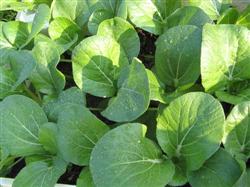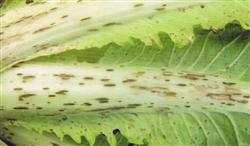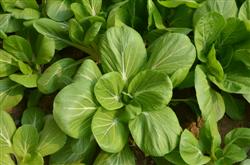How to grow Chinese cabbage in summer and autumn?

How to grow Chinese cabbage in summer and autumn? Please give a detailed introduction to the planting method of high temperature in summer and autumn, many rainstorms and serious diseases and insect pests. The use of rain shelter and pest prevention facilities to produce pakchoi is mild and conducive to pollution-free production; the yield is high, generally producing 1900 kilograms of large vegetables per mu, which is more than 40% higher than that cultivated with anti-insect net alone. Varieties are selected, such as heat-resistant and disease-resistant Xiaguan green stem vegetables, heat-resistant 605 and so on. Before sowing, we are prepared to apply sufficient basic fertilizer combined with ploughing and soil preparation, applying 2000 kg of rotten organic fertilizer per mu, and 1 kg of gold per mu to control underground pests. The 5-meter-wide greenhouse is made of 2 beds, with a width of 2 meters, with a 40-centimeter walkway in the middle, and 30-centimeter-wide trenches on each side of the shed. The roof is covered with a non-dripping film 7 meters wide, with a 1.2-meter high circumference of 25 mesh on both sides of the shed, and a 25-mesh anti-insect net at both ends of the shed, which is compacted with soil all around. Appropriate amount of sowing to produce vegetable seedlings, seed consumption of 1 to 1.5 kg per mu, and production of large vegetables of 50 to 100 grams per mu. Watering after sowing to keep the field soil moist, drip irrigation facilities can be installed in the greenhouse if possible, and seedlings can be completed 3-4 days after sowing. After sowing, 80 ml / mu of Dur (72% Metolachlor EC) was used to control weeds. After reasonable seedling emergence, vegetable seedlings began to pull the word "ten" for the first time, and the seedlings were too dense from time to time. The second interseedling of vegetable seedlings at 4-leaf stage, between weak seedlings and diseased seedlings. At the same time, combined with the market situation between the seedlings on the market, or appropriate refining seedlings for large planting. The row spacing of the fixed plants was 15 cm, and the plants were watered once after planting. Fertilizer and water management watering according to soil moisture after emergence. During the whole growing period, the vegetable seedlings were watered and fertilized for 2 times, 10 kg per mu, or diluted 600 to 800 times by drip irrigation. For those who produce large vegetables, fertilize and water them for 1 or 2 times after planting live plants. The prevention and control of diseases and pests adopts the way of covering the top of the film and the edge of the anti-insect net, which is isolated from the invasion of foreign insect sources, there is almost no harm to pests, and the occurrence of diseases is light. If there is a disease, the biological pesticide Ruixing 500 × 600 times solution can be used to control it for 1 time or 2 times. For large vegetables, carbendazim and agricultural streptomycin are used to prevent Sclerotinia sclerotiorum and soft rot. Timely harvest production of vegetable seedlings, 20 days after sowing can be harvested on the market; production of large vegetables, 30 days after planting can be listed on the market. Click to get more cabbage planting techniques click to get more vegetable planting techniques
- Prev

How to control anthracnose of Chinese cabbage in summer and autumn?
How to control anthracnose of Chinese cabbage in summer and autumn? Please introduce the prevention and control methods of anthracnose of Chinese cabbage in summer and autumn. In addition to harming Chinese cabbage, it can also harm cruciferous vegetables such as mustard, radish and turnip, affect the marketability of vegetables, and reduce production. Chinese cabbage anthracnose is a high-temperature and high-humidity disease. The temperature is 26 ℃ ~ 30 ℃.
- Next

How to grow cabbage in summer
How to grow cabbage in summer? Please give an introduction to the method of summer planting cabbage can refer to the following methods: 1, variety selection selection suitable for local summer high temperature planting and consumption habits of heat resistance, disease resistance, good commercial cabbage varieties, mainly early maturity No. 5,'Huaguan','Xiamei','...
Related
- Where is it suitable to grow horseradish in China? it is expected to see the middle altitude horseradish in Alishan.
- How to prevent tomato virus disease reasonably? (Control methods included)
- Many people like to plant towel gourd on the balcony. What are the main points of this method and management?
- What crops can chili peppers be mixed with?
- Fertilization techniques and matters needing attention in Tomato
- What are the grafting techniques for peach seedlings in spring?
- Harm and control methods of root swelling disease of Chinese cabbage
- What are the pests of sweet potatoes? How to prevent and cure it?
- Symptoms, causes and Control methods of navel Rot in Tomato
- The cause of "Cucumber rotten bibcock" in Farmers' planting Cucumber and its Control Plan

